Bling Ring mastermind Rachel Lee – whose notorious teen gang robbed homes of celebrities including Paris Hilton and Orlando Bloom in the late 2000s – reveals how she was driven by self hate: ‘I wanted to be white’
The leader of the infamous Bling Ring, which broke into celebrity homes between 2008 and 2009, has spoken out for the first time, claiming she was driven by a deep insecurity and hatred of her Asian heritage.
Rachel Lee was 19 when she and four others broke into the homes of Paris Hilton, Lindsey Lohan, Orlando Bloom and others. They noted their whereabouts on social media and timed their burglaries when they were out of town.
Lee was arrested in January 2010 and served 16 months in prison.
She has said that prison was the best thing that could have happened to her.
And while the others appeared in documentaries or collaborated with Sofia Coppola for her 2013 film Bling Ring, starring Emma Watson, Lee tried to live a quiet life working as a hairdresser.
She said her mind changed when she met Erin Lee Carr, who approached her about making a documentary of her story. It airs Sunday on HBO.
Rachel Lee was pictured at the premiere of the HBO documentary The Ringleader: The Case Of The Bling Ring on Wednesday
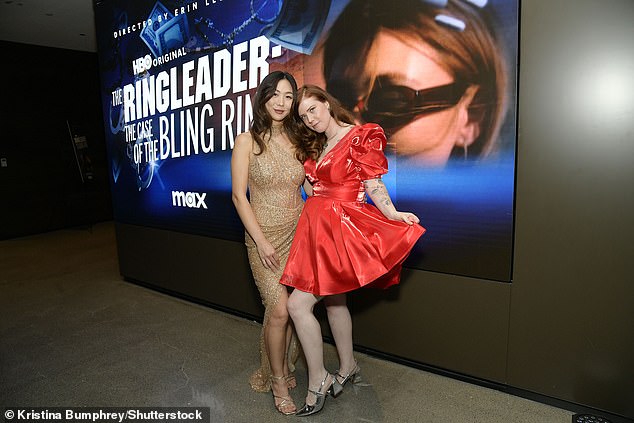
Rachel Lee and Erin Lee Carr, the documentary filmmaker, at the premiere of the HBO film

Lee is seen following her arrest in January 2010 for robbing the homes of famous Angelenos
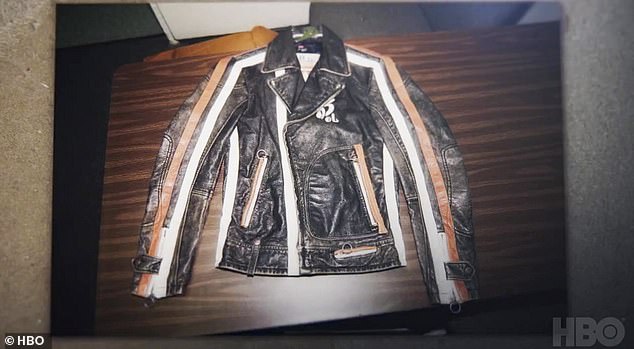
A motorcycle jacket that the gang stole from a celebrity’s house
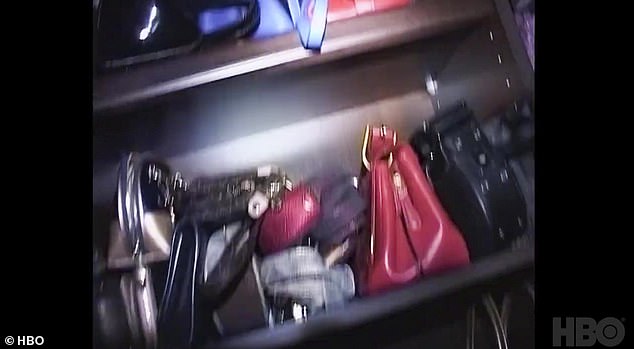
Some wallets the gang looted from a famous mansion
“Any other reporter or production, I was always shaking,” Lee said.
“When I met Erin, I felt like I was talking to a friend – as a human being – and I wasn’t being attacked. I was able to slowly just open up, and it happened organically through blind faith.”
She said The Los Angeles Times she was finally able to address the years of insecurity and self-loathing as a Korean-American, and her deep desire to be white.
When asked why she robbed famous people’s homes, Lee replied: “It wasn’t necessarily to emulate celebrities, I just didn’t like myself.”
“I was born here, so I only visited Korea last year, but thanks to my grandparents and my parents, I had some idea of my culture. I was such a minority in my schools that I felt too different.
“And in my high schools, the word ‘chink’ just rolled off people’s tongues.
‘Until prison I didn’t realize how delusional I was about myself. I didn’t realize how much I hated myself, how much I hated being Asian, and how much I wanted to be white.
“I kept asking God, ‘Why did you do this to me? Why did you put me in this position where I look so strange compared to everyone else?”
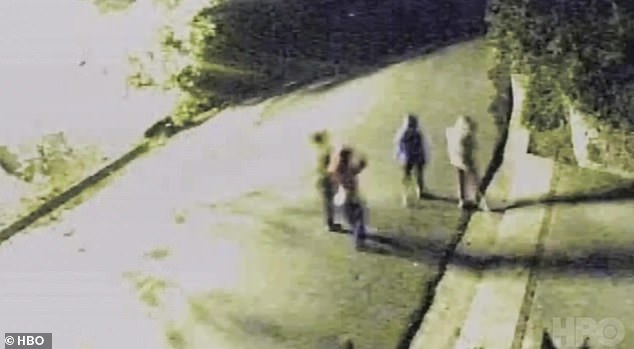
Four of the five are captured on camera during one of their thefts. They were eventually captured thanks to high-quality surveillance camera footage from the home of Audrina Patridge, star of reality show The Hills
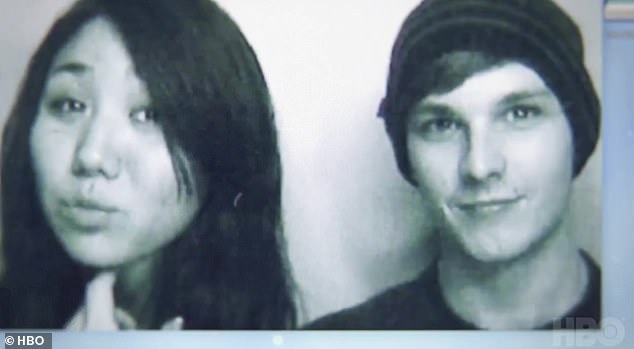
Lee is seen with Nick Prugo, her fellow thief. Prugo, Lee’s closest ally, was sentenced to two years in prison and served one year
Lee said her time behind bars gave her space to reflect on her life and who she had become.
She said she realized she was terribly vain; the fact that she had no mirrors in the prison was a shock to her, she said.
“I felt really empty inside,” she said.
‘I consider (prison) as my birth. I started over because I had no foundation, no moral compass.
‘I was grounded with whoever I wanted to be with. I want to be a good person. I want to be a nice person. I want to be a strong person – that’s what I’m working on. I want to be an honest person.’
Lee, a Calabasas native, said she has no contact with the other four — Nick Prugo, Alexis Neiers, Courtney Ames and Diana Tamayo.
Prugo, Lee’s closest ally, was sentenced to two years in prison and served one year.
But upon his release in 2015, he was charged with stalking and soliciting sexual assault.
He was given 350 hours of community service and three years’ probation, and now lives with his husband in LA.
Neiers got her own show on the E! Network, Pretty Wild, not long before her arrest in 2010.
During filming, she abused drugs and was often high.
She spent a month at the Century Regional Detention Facility in Lynwood, California, while Lohan served her own time.
Upon her release, Neiers went to rehab, married and had two children, and is now divorced and working as a rehabilitation counselor in Malibu.
Ames was given probation and community service and went on to study psychology, speech and child development at Pierce College in Woodland Hills, California. We weekly reported.
And Tamayo, who was also sentenced to probation and community service, is now a personal trainer.
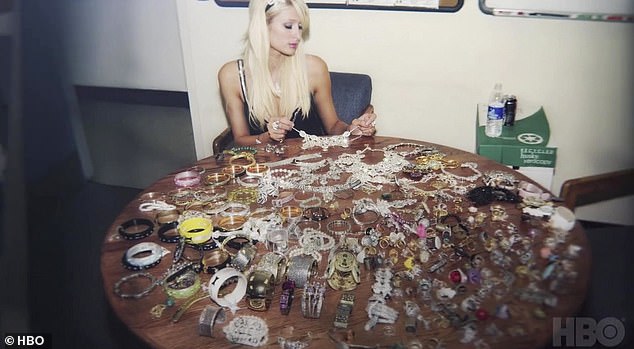
Paris Hilton shows off her jewelry, which inspired and directed the gang

The group robbed $3 million worth of celebrity property
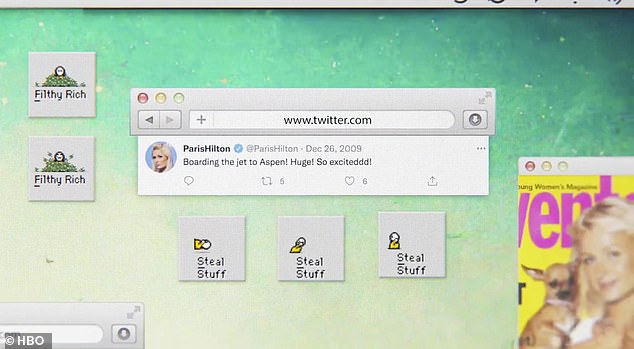
The gang followed celebrities on social media and knew when they were out of town
Lee said “God and my family” were now keeping her on the straight and narrow.
“At a time when I thought my entire family would disown me, it didn’t happen,” she said.
“I was sober in prison, I was sober outside of prison. It has helped me be down to earth and really aware of the types of friends I bring into my life.
‘I used to be such an impulsive person, sometimes I still am, but now that I got out of prison I asked myself more and more: ‘Why do you think that? Why did you do that?’
‘And then I have a love for crystals. That is aesthetic, but also a reminder of the properties that crystals have.’
Lee said she finds the idea of her as leader “unfair” because the others were equally to blame.
‘Everyone is responsible for their own actions. “I never forced anyone to do anything,” she said.
But she said she forced herself to make the documentary to confront her past and show that people can change.

Lee said she made the documentary to show that people can change
‘The reason why I did this is because I like to hide. I have been since I was a kid,” Lee said.
“But I have big emotions, and a big part of me felt like if I have all these big emotions and I can’t talk about them, what’s going to happen to me? What kind of life, what kind of outcome? I feel like that’s how diseases and depression come about.
“I felt like, well, I recognize that I really messed up in my past, but does that mean I don’t deserve a second chance?
‘So I want to use myself as an example. I want to be a conversation starter. I just wanted more communication and connection in this world.”
Carr, the documentary filmmaker, said it was sometimes difficult to get Lee to open up.
But she hoped the film would give viewers a chance to make up their own minds based on Lee’s own words rather than those of others.
“Take the information and decide for yourself,” Carr said.
“I provide the information, with music to all these things, but also so that when people watch this, I’m not telling them what to think, but how to feel.”
